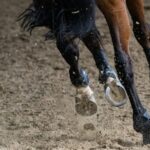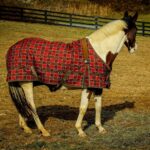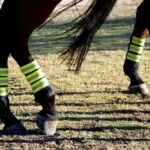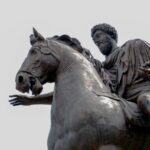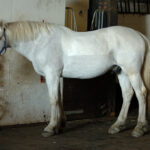Throughout the annals of military history, few partnerships have been as decisive as that between warrior and warhorse. On ancient battlefields across Eurasia and North Africa, specially bred and trained horses transformed warfare, projecting power and determining the fates of empires. These magnificent animals weren’t merely transportation—they were living weapons, selected for strength, courage, and the ability to perform under the chaos of battle. From the thundering cavalry charges of the Scythians to the disciplined maneuvers of Roman mounted units, powerful war horses shaped military tactics and strategy for millennia. Let’s explore the most formidable equine warriors of the ancient world, their distinctive capabilities, and the cultures that harnessed their extraordinary power.
The Nisean Horse: Persia’s Living War Machines

The legendary Nisean horse stands among the most celebrated ancient warhorses, prized possessions of Persian nobility and royalty. These magnificent animals were bred in the Nisean Plains of ancient Media (northwestern Iran) and grew to remarkable sizes that dwarfed other horses of their era. Historical accounts describe them as having broader chests, stronger legs, and more imposing physiques than typical horses, with adult males potentially reaching heights that modern experts estimate between 15 and 16 hands (60-64 inches at the shoulder). Their distinctive appearance often included dappled gray or white coats, leading to their nicknames as “horses of gold” or “heavenly horses.” So valuable were these animals that they served not just as elite military mounts but as prestigious diplomatic gifts between empires, with Nisean horses being presented to distinguished allies as symbols of the highest esteem.
Scythian Horses: Hardy Warriors of the Steppe
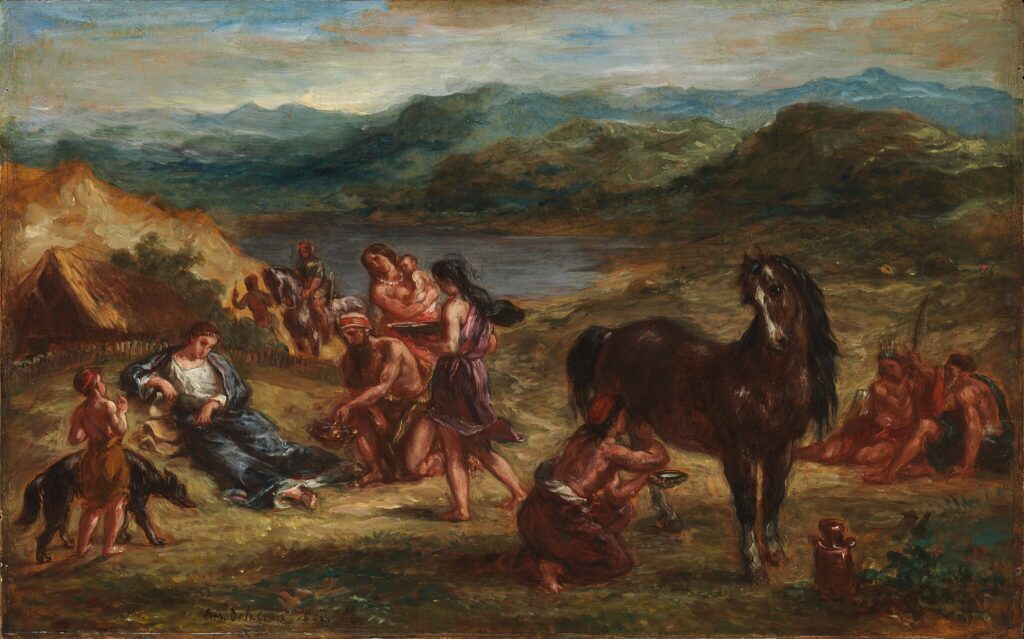
The nomadic Scythian people developed one of history’s first truly horse-centered military cultures, with mounts that combined compactness with remarkable endurance. Standing between 13 and 14 hands high, these horses were smaller than modern warhorses but possessed incredible stamina that allowed them to travel up to 100 miles daily across the harsh Eurasian steppes. Archaeological evidence from Scythian burial mounds reveals horses with strong bone structure, particularly in the legs and shoulders, adaptations that facilitated the Scythians’ revolutionary mounted archery tactics. The bond between Scythian warriors and their horses was so profound that horses were often sacrificed and buried alongside their riders, sometimes with elaborate golden decorations and masks. Their horses’ combination of speed, endurance, and surefootedness allowed Scythian forces to execute the feigned retreat tactics that would become their signature battlefield strategy.
The Thessalian Horse: Greece’s Premier Cavalry Mount
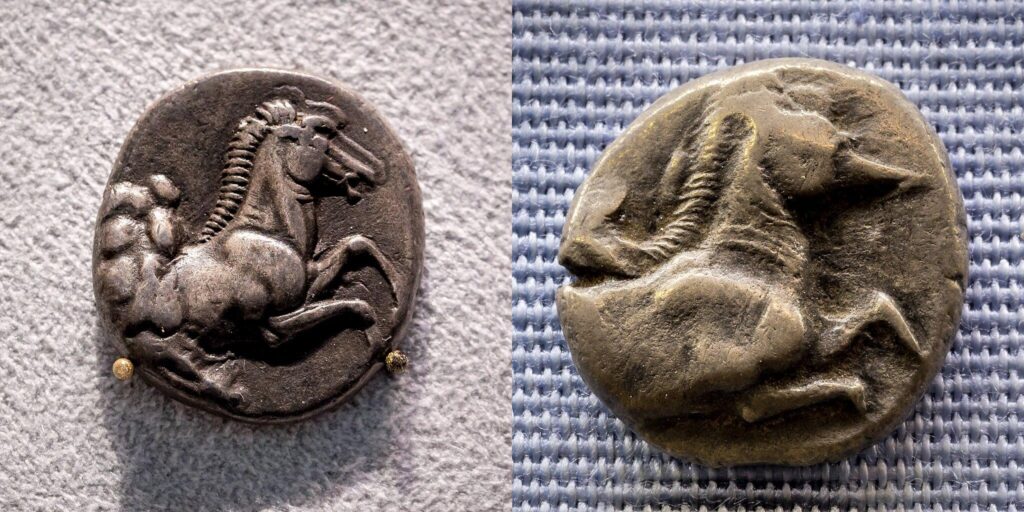
While ancient Greece is often remembered for its infantry phalanxes, the horses bred in the plains of Thessaly were renowned throughout the classical world for their power and trainability. These horses stood approximately 14-15 hands high with muscular builds, wide chests, and strong hindquarters that made them ideal for close combat scenarios. Thessalian horses were particularly valued for their unique combination of speed and maneuverability, qualities that allowed Greek cavalry to execute complex battlefield maneuvers. Alexander the Great’s famous steed Bucephalus, though not definitively confirmed as Thessalian, exemplified many of the qualities that made these horses exceptional military companions, including their responsiveness to rider commands and courage under fire. Their reputation was such that Thessalian cavalry units commanded premium prices as mercenaries throughout the Mediterranean world.
Numidian Horses: North Africa’s Lightning Cavalry
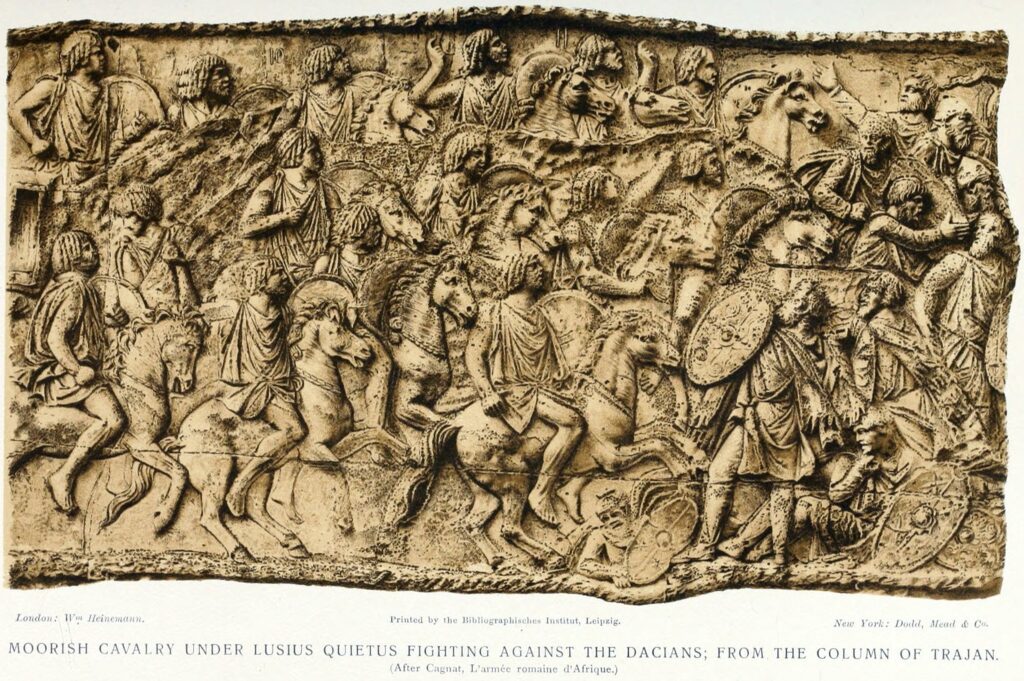
The kingdoms of ancient Numidia (modern Algeria and parts of Tunisia) produced horses that became legendary for their agility and raw speed. These relatively small horses, rarely exceeding 14 hands high, possessed a natural athleticism that made them incredibly responsive in battle. Contemporary accounts describe Numidian horsemen riding without saddles or bridles, controlling their mounts through knee pressure and voice commands alone—a testimony to both the horses’ intelligence and the deep bond formed with their riders. These horses’ most remarkable feature was their acceleration and turning ability, which allowed Numidian cavalry to execute hit-and-run tactics with devastating effectiveness against larger, more heavily armed opponents. During the Second Punic War, Numidian cavalry proved decisive in several engagements, with their horses’ superior maneuverability allowing them to outflank and harass Roman formations.
The Ferghana Horse: China’s “Heavenly Horses”
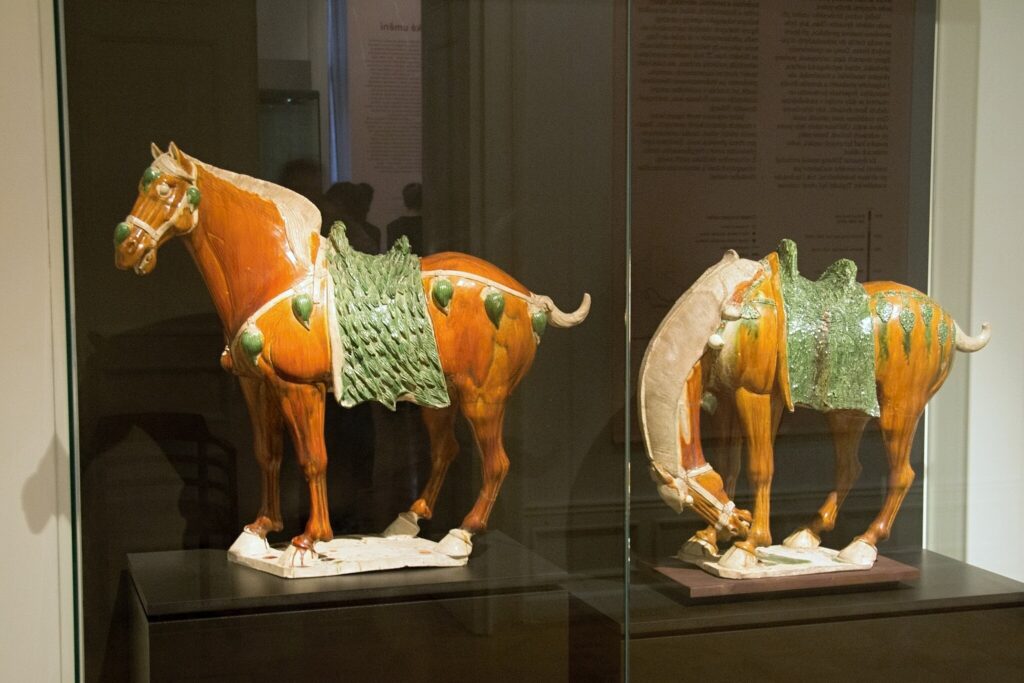
The horses from the Ferghana Valley (spanning modern Uzbekistan, Tajikistan, and Kyrgyzstan) became objects of near-obsession for ancient Chinese emperors, particularly Emperor Wu of the Han Dynasty. These horses, sometimes called “blood-sweating horses” due to a parasitic condition that caused red spots on their coats, were larger and more powerful than native Chinese equines, standing around 15 hands high with distinctive muscular necks and powerful hindquarters. The Chinese valued these horses so highly that Emperor Wu launched military campaigns specifically to acquire them, believing they possessed supernatural qualities that would bring divine favor to his empire. When finally obtained after considerable diplomatic and military effort, Ferghana horses dramatically transformed Chinese cavalry capabilities, enabling longer campaigns against nomadic threats along the empire’s northern frontier. Their bloodlines became so precious that strict breeding controls were implemented, with penalties for unauthorized breeding sometimes including death.
Iberian Horses: The Elite Mounts of Carthage and Rome
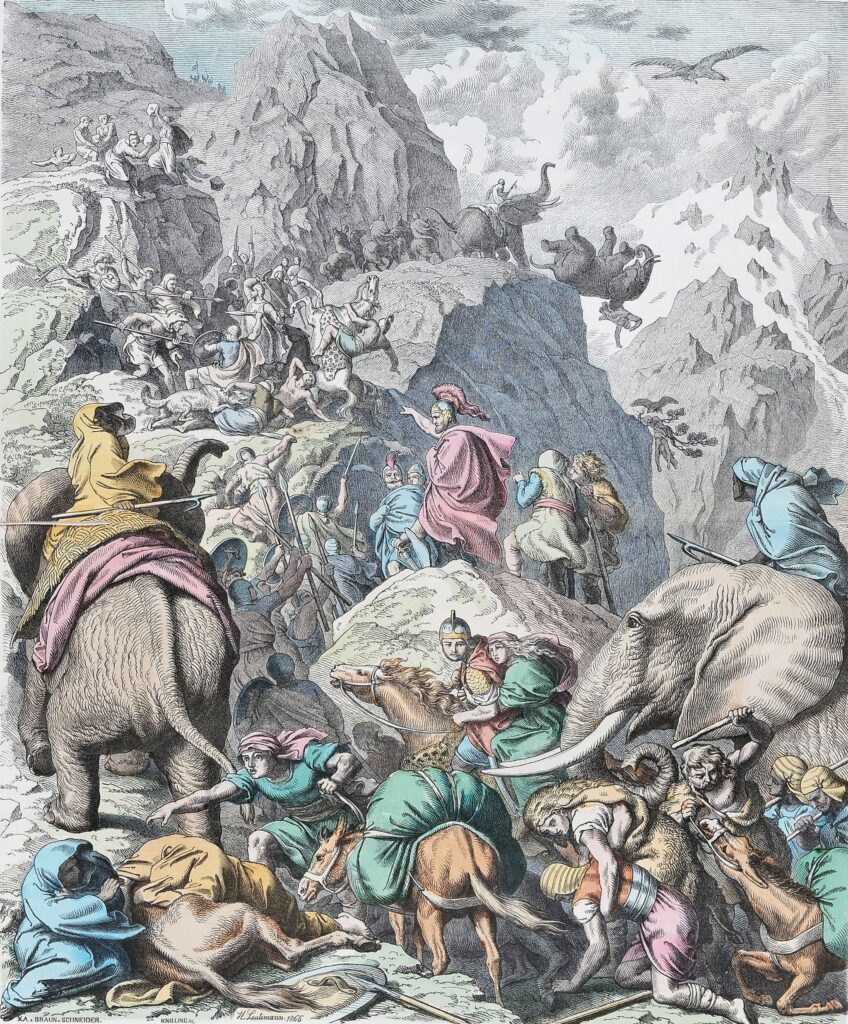
The Iberian Peninsula produced horses that combined the stamina of northern European breeds with the agility of North African bloodlines, creating a versatile warhorse prized by multiple Mediterranean powers. Standing between 14 and 15 hands high, Iberian horses displayed a distinctive proud carriage with elevated gaits that made them particularly suitable for the precise maneuvers required in formation riding. Their powerful hindquarters provided explosive acceleration, while their naturally collected movement made them remarkably responsive to rider commands even in the chaos of battle. Carthaginian general Hannibal specifically selected Iberian horses for his officers during his famous Alpine crossing, valuing their surefootedness in difficult terrain and ability to withstand harsh conditions. Following Rome’s conquest of Iberia, these horses became integrated into Roman cavalry units, particularly for officers and elite formations who appreciated their combination of power, endurance, and trainability.
Parthian Horses: Masters of the Hit-and-Run
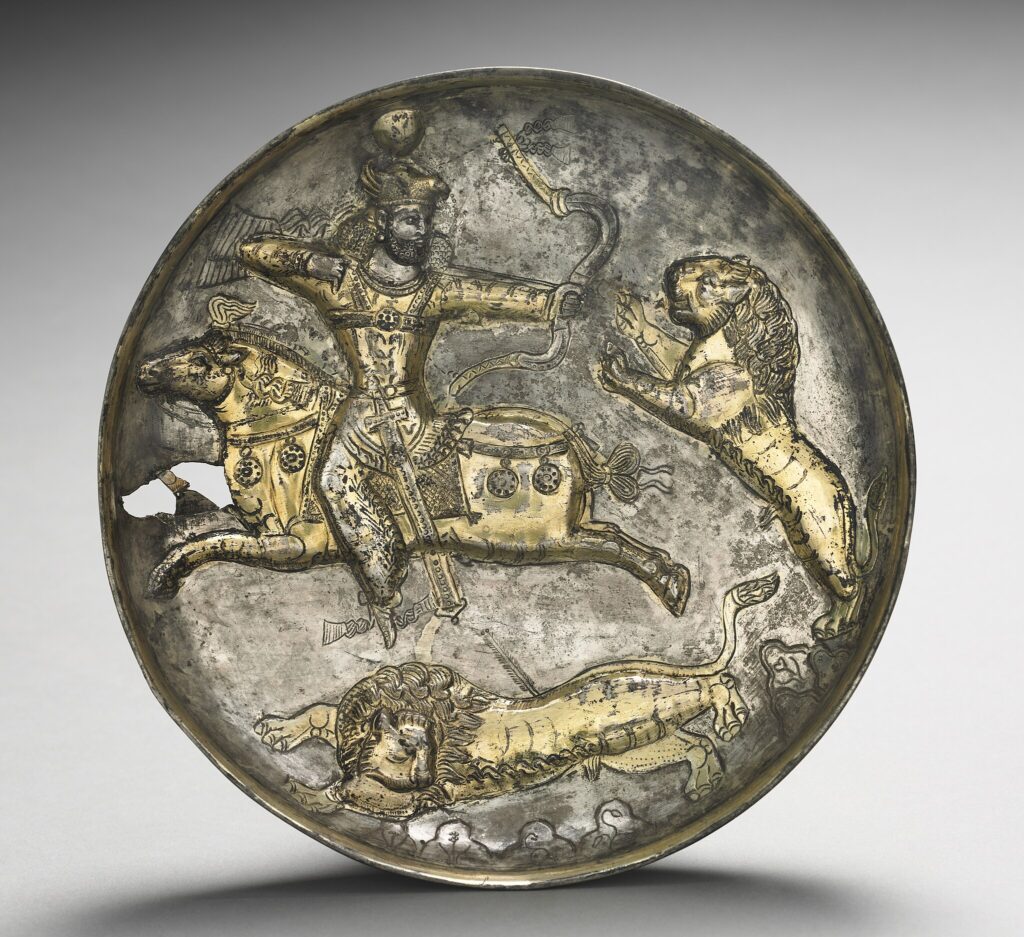
The Parthian Empire developed perhaps the ancient world’s most sophisticated horse breeding program, creating specialized mounts for their revolutionary cavalry tactics. These horses combined elements of Nisean and steppe bloodlines, producing medium-sized but extraordinarily agile animals capable of the rapid acceleration and direction changes needed for the famous “Parthian shot” maneuver. Historical accounts describe Parthian horses as having exceptional lung capacity and heat tolerance, allowing them to maintain speed over extended engagements in the harsh climate of the Iranian plateau. The horses underwent specialized training from birth, including desensitization to noise and movement, creating mounts that remained calm amid the chaos of combat. Their capabilities were demonstrated most dramatically at the Battle of Carrhae (53 BCE), where Parthian horses’ stamina and maneuverability allowed mounted archers to circle and decimate a numerically superior Roman force while avoiding direct engagement.
Celtic and Germanic Warhorses: Power from the North
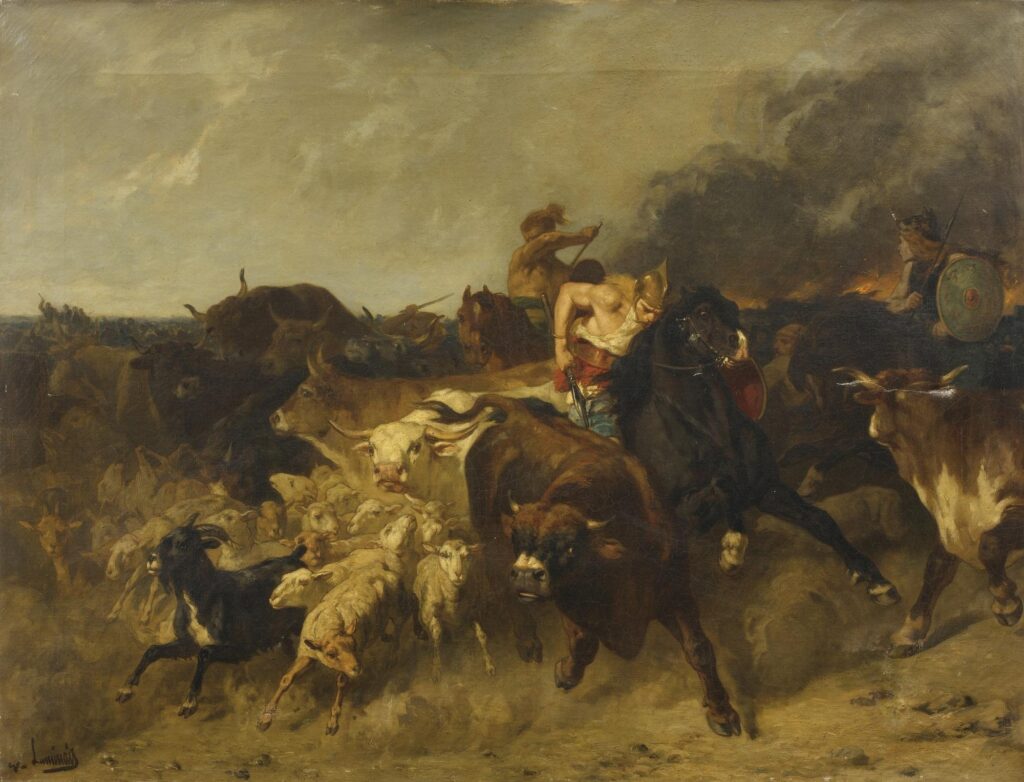
The forests and plains of northern Europe produced heavier horses that provided Celtic and Germanic warriors with platforms for their distinctive shock-based cavalry tactics. These horses, ancestors of modern draft breeds, stood between 14 and 15 hands with notably powerful bone structure, broad chests, and strong hindquarters capable of carrying armored warriors. Roman accounts specifically mention the effectiveness of Germanic and Celtic cavalry in breaking infantry formations through the sheer physical impact of their charge. Archaeological evidence from burial sites shows these horses received specialized care, including selective breeding for size and strength that produced animals significantly larger than typical Mediterranean mounts. While lacking the refined appearance of southern breeds, these northern warhorses excelled in the wet, difficult terrain of northern Europe where their sure-footedness and strength allowed them to maintain effectiveness in conditions that would immobilize lighter cavalry.
The Sarmatian Cataphract: Armored Power
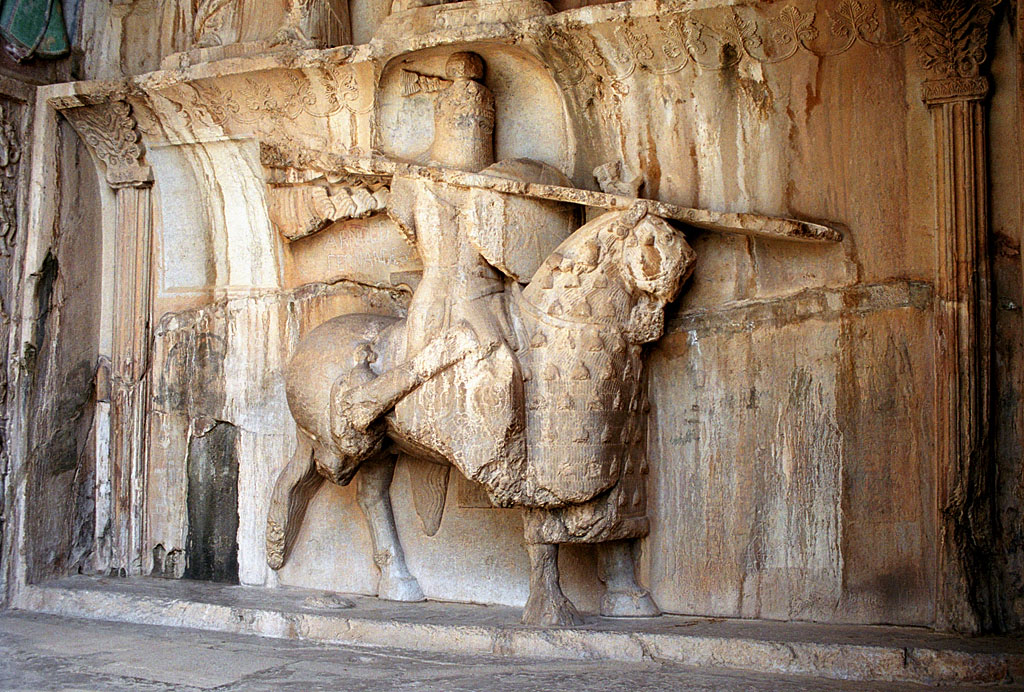
The Sarmatian peoples developed specialized heavy cavalry that required exceptionally powerful horses capable of carrying armored riders and their equipment into battle. These horses, standing approximately 15 hands high, were specifically bred for their extraordinary carrying capacity and endurance under heavy loads, with broader backs and more substantial bone structure than typical steppe horses. Archaeological evidence suggests Sarmatian horses wore their own armor of leather scales reinforced with horn or metal plates, requiring additional strength and conditioning to move effectively under such weight. Contemporary Roman accounts describe the intimidating sight of Sarmatian cavalry advancing like “moving fortresses,” with both horse and rider completely encased in armor. The training process for these horses began at a young age, gradually accustoming them to increasing weight and the restricted visibility caused by their protective equipment.
Arabian Foundations: The Desert Warriors
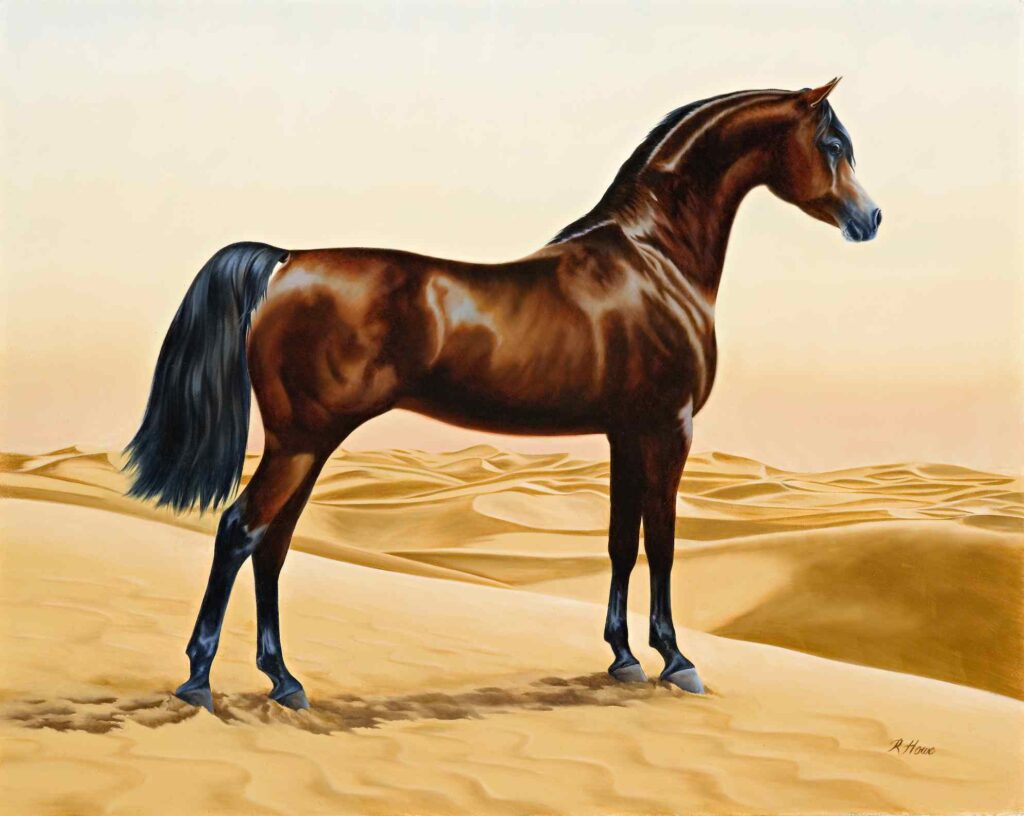
Although the Arabian horse would reach its greatest military prominence after the rise of Islam, its development as a warhorse began in ancient times among the nomadic tribes of the Arabian Peninsula. Standing between 14 and 15 hands high, these horses possessed a distinctive combination of speed, endurance, and intelligence that made them exceptional military companions in desert warfare. Their physical adaptations included denser bone structure than their size would suggest, large nostrils for efficient oxygen intake, and a naturally high tail carriage that improved circulation during extended exertion. The harsh desert environment naturally selected for horses with extraordinary stamina and heat tolerance, with historical accounts describing Arabian horses maintaining a gallop for hours where other breeds would collapse. The close quarters in which these horses lived with their Bedouin owners created animals with remarkable human affinity, responding intuitively to their riders’ commands during battle.
Cavalry Tactics and Horse Specialization
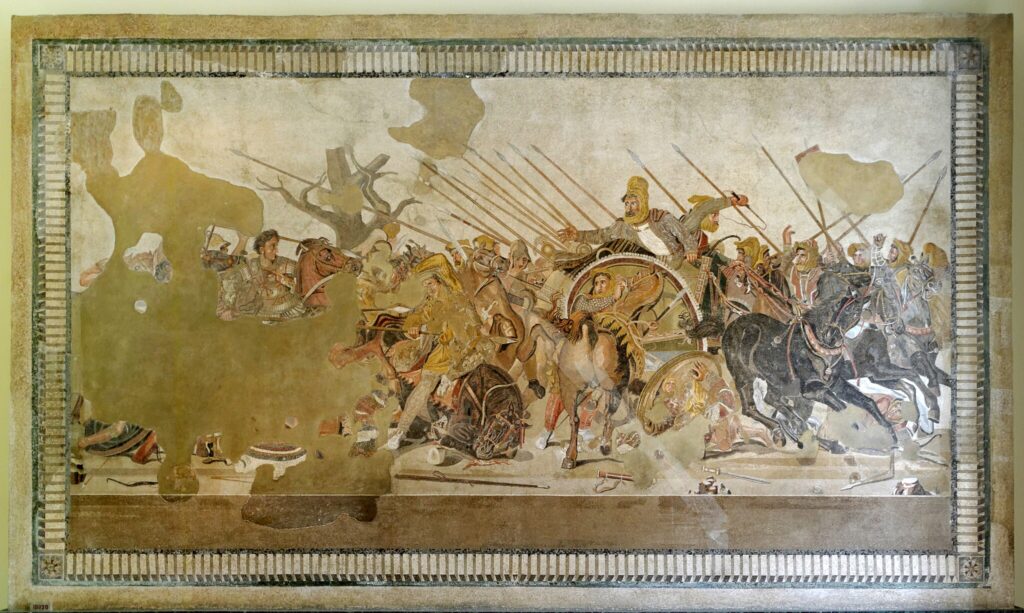
Ancient military powers developed increasingly specialized horse breeding programs to support their distinctive tactical approaches to mounted warfare. The Macedonian cavalry under Philip II and Alexander the Great selected horses specifically for the close-formation wedge charges that broke enemy infantry lines, favoring animals with strong hindquarters and fearless temperaments. In contrast, Parthian and Scythian forces bred for speed and endurance to support their circling tactics and mounted archery, selecting horses with exceptional lung capacity and natural agility. Roman cavalry adaptation showed remarkable flexibility, with evidence of different horse types being deployed for scouting (lighter, faster animals) versus shock combat (heavier, more powerful mounts). This tactical specialization led to sophisticated understanding of equine bloodlines, with ancient military manuals specifically describing the characteristics to seek when selecting horses for different military roles.
Breeding and Training Methods of Ancient Warhorses
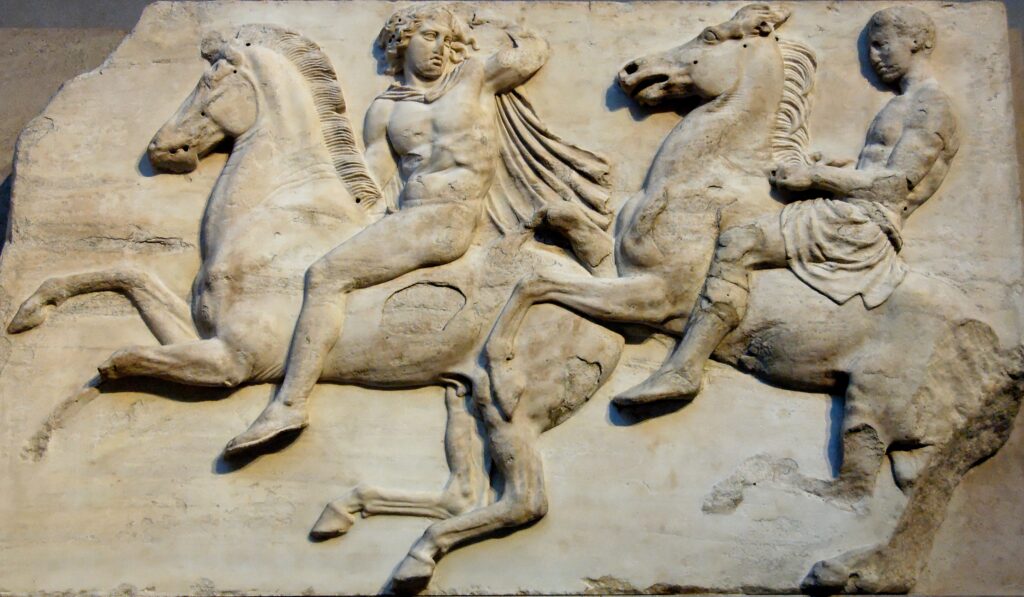
Ancient horse trainers developed remarkably sophisticated methods for preparing animals for the chaos of combat, creating systematic programs that gradually built physical and psychological resilience. Written sources from multiple civilizations describe similar progression patterns, beginning with desensitization exercises where young horses were gradually exposed to loud noises, flapping fabrics, and the glint of weapons to prevent battlefield panic. Physical conditioning involved carefully structured exercise regimens, with horses performing increasingly demanding maneuvers while carrying progressively heavier weights to build the necessary strength for combat situations. Xenophon’s “On Horsemanship,” written in the 4th century BCE, outlines training techniques remarkably similar to modern natural horsemanship methods, emphasizing reward-based training and the development of trust between horse and rider. Archaeological evidence from multiple cultures shows specialized equipment development, including training obstacles, exercise yards, and specialized bits designed to enhance communication between rider and mount in battlefield conditions.
Legacy and Influence on Modern Horse Breeds
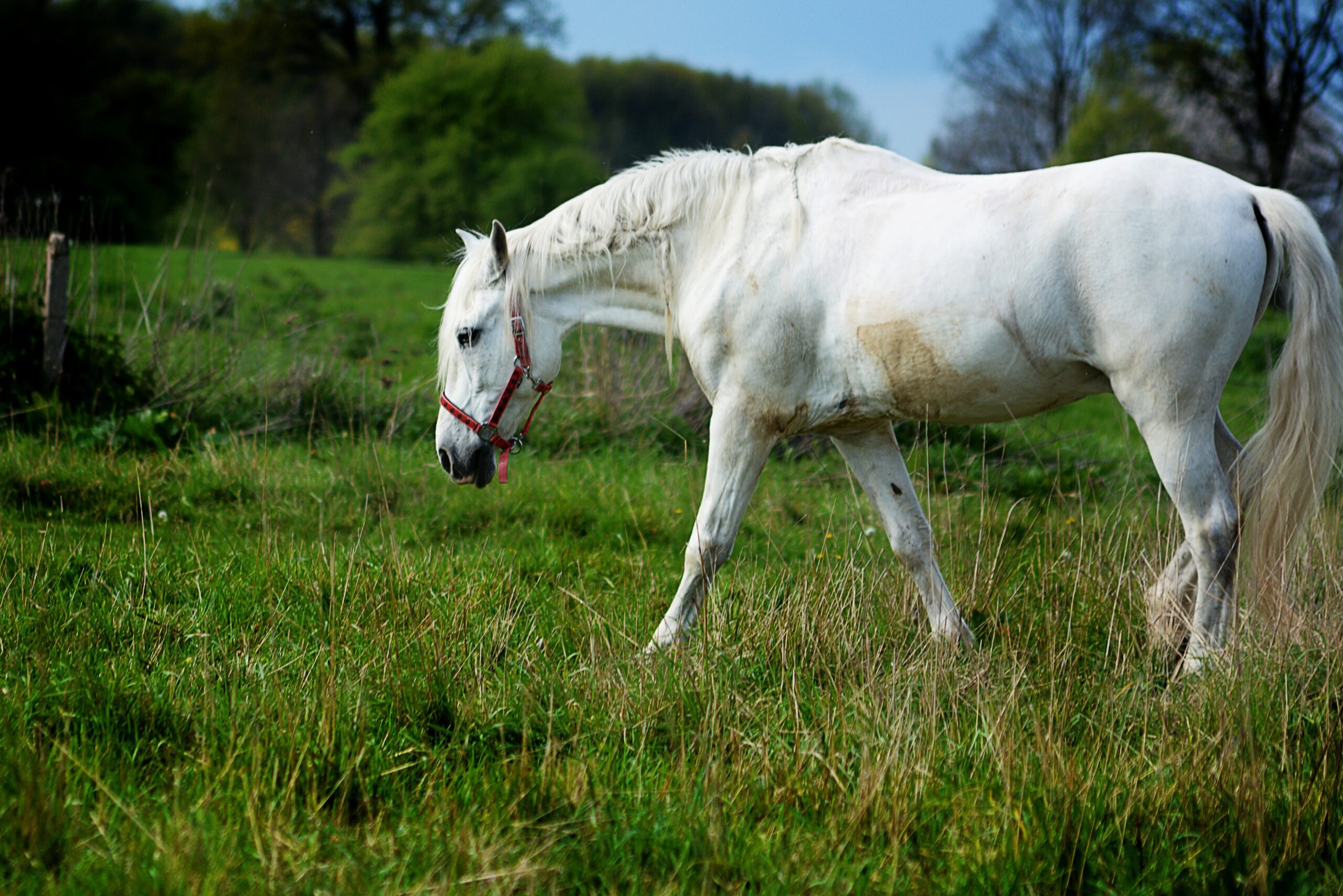
The bloodlines of ancient warhorses continue to influence modern equestrian breeds, with certain physical and temperamental traits directly traceable to these martial ancestors. The Andalusian horse carries the genetics of Iberian warhorses, retaining their collected movement, powerful hindquarters, and natural aptitude for the precise lateral movements that once helped riders avoid enemy weapons. Many modern sport horse breeds owe their courage and trainability to selective breeding practices first implemented for ancient military purposes, where horses unable to maintain composure under stress were eliminated from breeding programs. Archaeological DNA studies increasingly reveal the migration patterns of ancient warhorse bloodlines, showing how prized military mounts spread their genetics across continents through conquest, trade, and diplomatic exchange. Perhaps most significantly, the physical characteristics most prized in ancient warhorses—courage, intelligence, responsiveness to human direction, and athletic versatility—remain the fundamental qualities sought in top performance horses today, demonstrating how this ancient military partnership shaped our continuing relationship with these magnificent animals.
In the dust and thunder of ancient battlefields, the partnership between warriors and their horses often made the difference between victory and defeat, conquest and subjugation. These remarkable animals carried not just their riders but the fate of nations on their powerful shoulders. While tactics, weapons, and empires changed throughout antiquity, the fundamental qualities that made exceptional warhorses remained consistent: courage, strength, intelligence, and the willingness to charge into danger at their rider’s command. From the nimble desert Arabians to the powerful northern chargers, from the swift Numidians to the imposing Niseans, these equine warriors shaped history in ways that continue to influence our world. The legacy of these magnificent animals lives on not just in military history but in the very bloodlines of horses that still carry their ancient power into our modern world.


